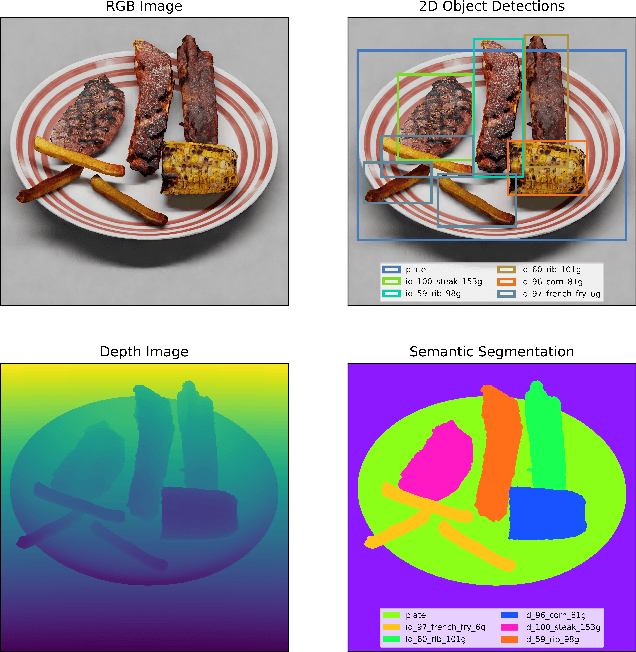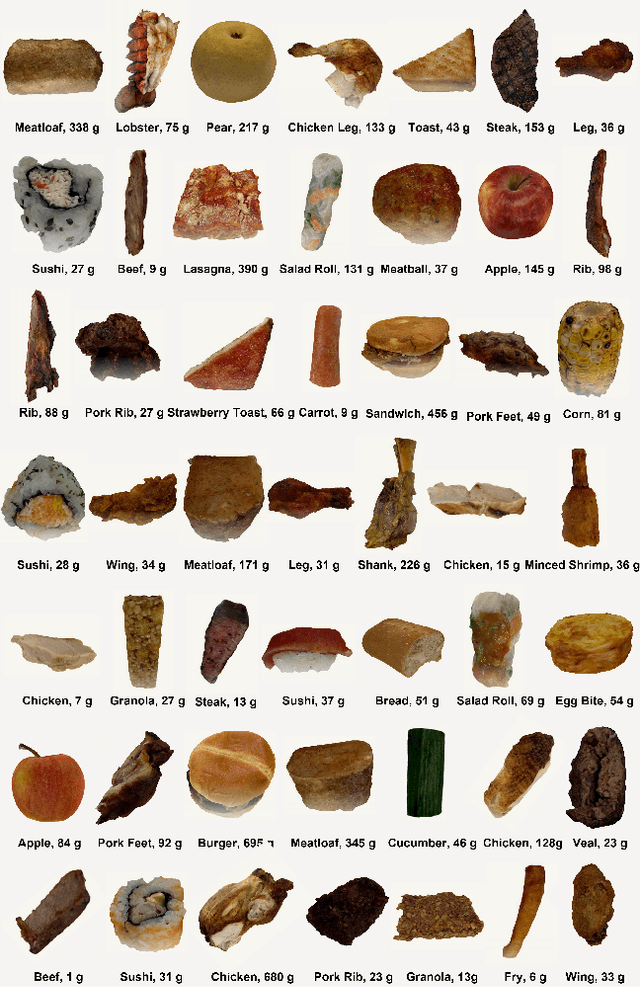NutritionVerse-3D: A 3D Food Model Dataset for Nutritional Intake Estimation
Paper and Code
Apr 12, 2023



77% of adults over 50 want to age in place today, presenting a major challenge to ensuring adequate nutritional intake. It has been reported that one in four older adults that are 65 years or older are malnourished and given the direct link between malnutrition and decreased quality of life, there have been numerous studies conducted on how to efficiently track nutritional intake of food. Recent advancements in machine learning and computer vision show promise of automated nutrition tracking methods of food, but require a large high-quality dataset in order to accurately identify the nutrients from the food on the plate. Unlike existing datasets, a collection of 3D models with nutritional information allow for view synthesis to create an infinite number of 2D images for any given viewpoint/camera angle along with the associated nutritional information. In this paper, we develop a methodology for collecting high-quality 3D models for food items with a particular focus on speed and consistency, and introduce NutritionVerse-3D, a large-scale high-quality high-resolution dataset of 105 3D food models, in conjunction with their associated weight, food name, and nutritional value. These models allow for large quantity food intake scenes, diverse and customizable scene layout, and an infinite number of camera settings and lighting conditions. NutritionVerse-3D is publicly available as a part of an open initiative to accelerate machine learning for nutrition sensing.
 Add to Chrome
Add to Chrome Add to Firefox
Add to Firefox Add to Edge
Add to Edge